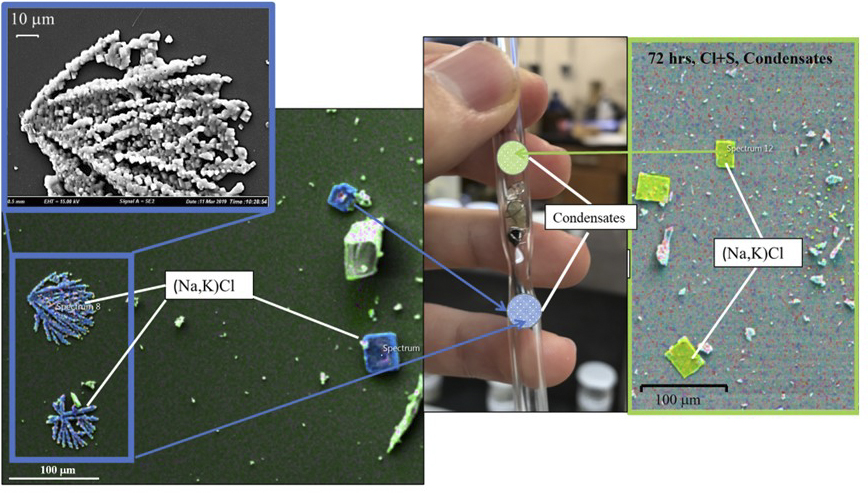Alexander Rogaski, who completed his master’s degree at South
Dakota Mines in geology, is shown here working in the lab that created a model
of a fumarole under the surface of Mars.
Gokce K
Ustunisik, Ph.D., an associate professor in the Department of
Geology and Geological Engineering at South Dakota Mines, and Alexander Rogaski, who completed his master’s degree at Mines under Ustunisik,
have produced minerals found on Mars by experimentally mimicking the conditions
in Martian fumaroles, or vents found in areas of volcanic activity.
Their work, published in
the journal of Meteoritics and Planetary Science, indicates ongoing volcanism on the red planet. Scientists
only recently  discovered that Mars may
have areas of active volcanos. “Both rover and orbital Martian missions have provided
a wealth of information on geologic processes of the Martian surface. That
said, we still do not understand the origin of the high values of germanium and
zinc metals in the Gale and Gusev Craters on Mars. These values contradict what
is found in Martian meteorites,” says Ustunisik.
discovered that Mars may
have areas of active volcanos. “Both rover and orbital Martian missions have provided
a wealth of information on geologic processes of the Martian surface. That
said, we still do not understand the origin of the high values of germanium and
zinc metals in the Gale and Gusev Craters on Mars. These values contradict what
is found in Martian meteorites,” says Ustunisik.
Using data gathered by satellites, Ustunisik and Rogaski
designed laboratory experiments to recreate what happens inside a Martian fumarole.
“Since we do not have actual Martian samples, we had
to recreate the composition of the Martian magmas in the mantle by making
magmas inside a piston cylinder at the same pressures and temperatures found
under Mars. These experiments show as magmas move toward the surface of the
planet they degas, like opening a soda pop bottle with forming of bubbles. This
gas cools and interacts with minerals on the surface of the planet to form rare
minerals found on satellite scans of Mars,” says Ustunisik.
“This alteration of minerals by hot gases is quite common
on Earth,” says Ustunisik. “This research shows this process is also happening
on Mars. This is a unique experimental design that can be used to mimic these
Martian processes in the laboratory. We can do this on other planets besides
Mars.”
Ustunisik and Rogaski’s work was funded by NASA-Emerging
Worlds grant with her collaborator Denton S. Ebel at the American Museum of
Natural History department of Earth and Planetary Sciences, where Dr. Ustunisik
is a Research Associate. A second grant from the South Dakota Space Consortium
grant for Rogaski’s work also helped make this research possible.
Alexander Rogaski is currently working as a senior
staff geologist at the company Geosyntec Consultants in California. Dr. Ustunisik
is planning on continuing this research and is seeking funding for graduate
students interested in planetary geology.
Caption:
These images show unique mineral growth in a controlled laboratory
experiment that mimics some mechanisms inside Martian hot springs; the same
minerals shown in this experiment are also deposited on the surface of the red
planet.